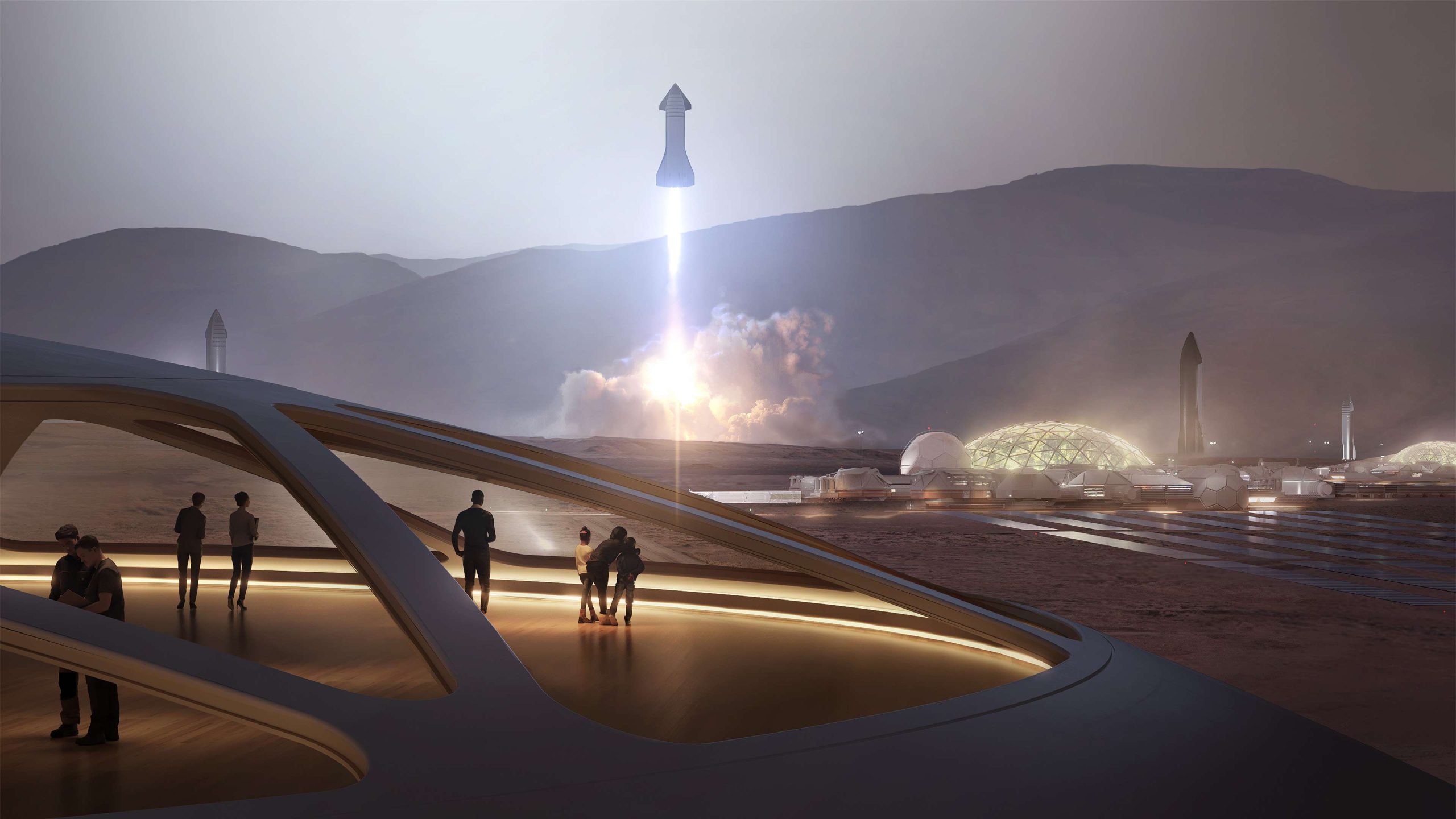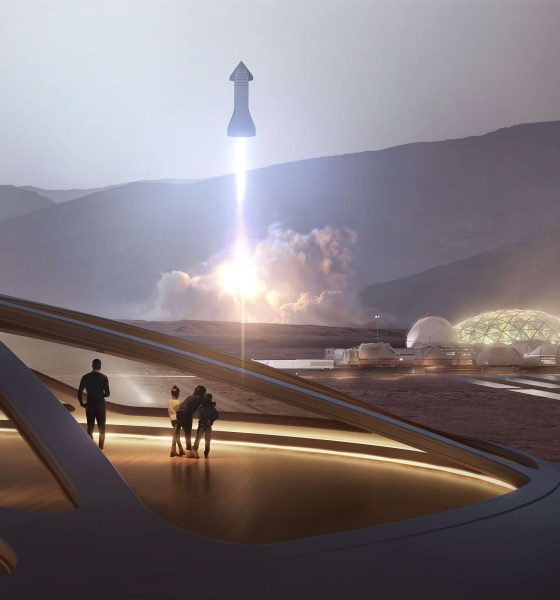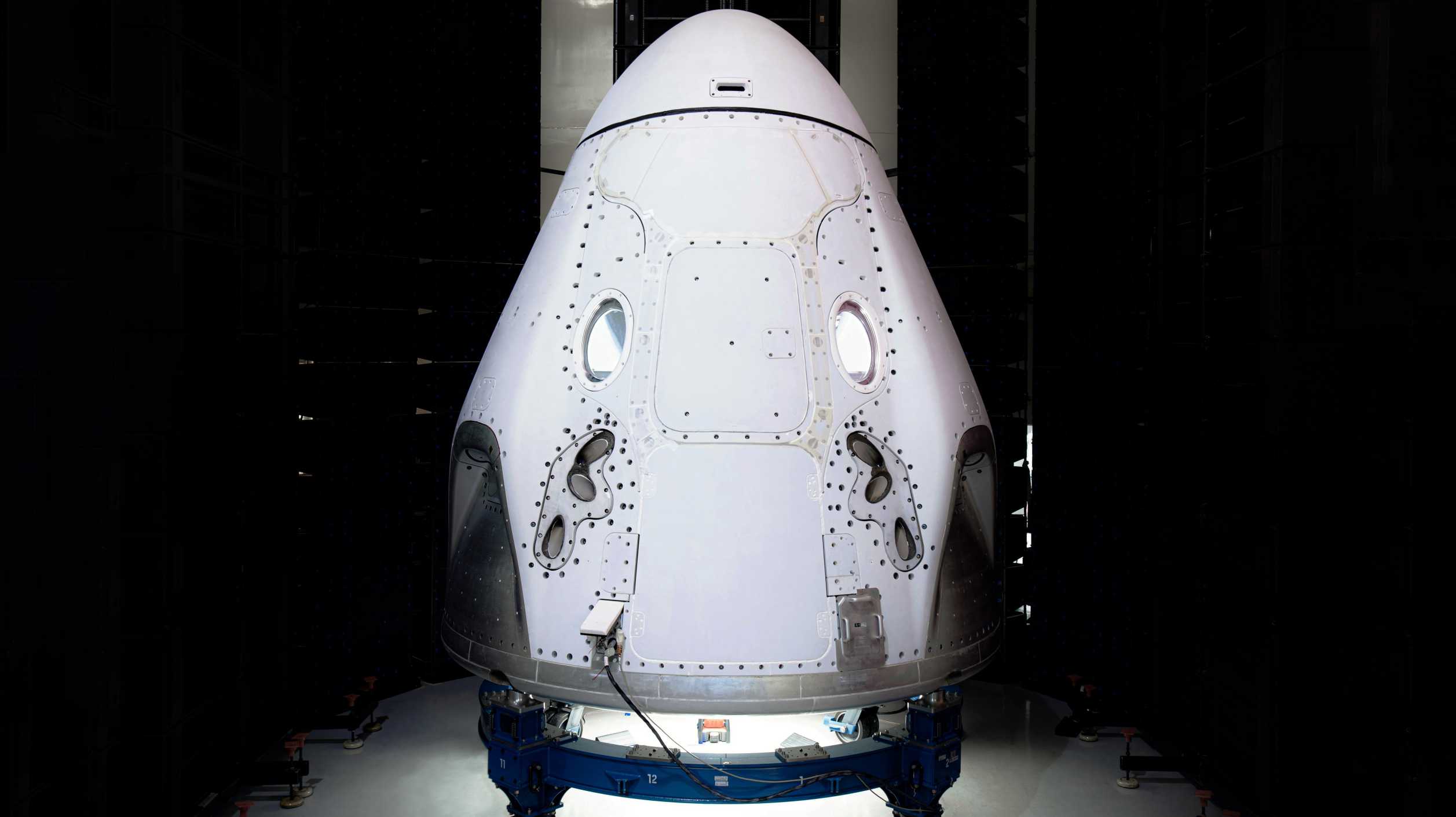

News
Elon Musk on humans in Mars before he dies, urges faster pace of progress
Elon Musk has a major goal: to get humanity to Mars before he dies. A lofty goal that he reiterated before a crowd on Monday at the Satellite 2020 conference in Washington D.C.
“If we don’t improve our pace of progress, I’m definitely going to be dead before we go to Mars,” Musk said to the journalists and industry leaders in attendance.
— Elon Musk (@elonmusk) March 11, 2020
SpaceX, founded by Musk in 2002, nabbed the first of many lucrative deals for the burgeoning rocket company in 2008 when the company was named one of two corporations that would ferry cargo to the International Space Station (ISS). (Orbital Sciences, now Northrop Grumman is the other.)
To date, SpaceX has flown 20 cargo resupply missions to the space station, and very soon will send an upgraded version of the Dragon to ferry astronauts to the orbital outpost as well. But this is just the beginning for Musk and SpaceX.
Musk has his sights set on the moon and Mars. But he’s worried that our current technology isn’t progressing as quickly as it should in order to make Mars happen. That’s evident if you look at the commercial crew program.
In 2011, NASA’s storied fleet of space shuttles retired, and space agencies around the world were forced to rely solely on the Russian Soyuz to transport astronauts to and from space. That agreement would only be temporary as NASA tapped SpaceX and Boeing with the task of building its next-generation astronaut taxis.
Innovation takes time, and after years of delays due to various reasons, SpaceX is on the cusp of launching its first set of astronauts. Bob Behnken and Doug Hurley will board the Crew Dragon spacecraft and fly to the ISS as early as this May. NASA is still trying to iron out the details (like how long they will stay) as SpaceX completes the last two parachute tests prior to launch.

Simultaneously, Musk and SpaceX are working on a massive rocket that will ferry people and cargo to Mars. Called Starship, the heavy-lifter is approximately 400-feet of stainless steel that could transport the first people to the red planet. That is if all goes as planned.
Eagle-eyed onlookers first spotted the towering silver craft in Jan. 2019 at SpaceX’s work site in Boca Chica, TX. That initial prototype was the first step towards reaching Mars and Musk’s goal of building a city on Mars with up to one million people in it, preferably sometime within the next 50 years.
To do so, SpaceX will need a fleet of massive, silvery spaceships. The company is on its third test article, but Musk hopes to ramp up production to one Starship a week by year’s end.
“Unless we improve our rate of innovation dramatically, then there is no chance of a base on the moon or Mars,” Musk said during the conference. “This is my biggest concern.”
Starship will launch atop a Super Heavy launcher. In true SpaceX fashion, both vehicles will be reusable, which lowers the cost significantly. Musk has said that eventually, each Starship mission could cost a mere $2 million.
Starship could launch as early as this year, especially if production rates ramp up the level that Musk hopes. So far, the craft is already booked for one trip around the moon sometime in 2023. That Starship will carry Japanese billionaire Yusaku Maezawa.
Musk also squashed the notion that his Starlink internet service would go public. According to Musk, that endeavor could net his company as much as $30 billion, if it doesn’t go bankrupt. “Guess how many LEO constellations didn’t go bankrupt? Zero,” he said. “We just want to be in the non-bankrupt category.”
So for now, Musk says SpaceX is focused on getting the project off the ground and not spinning it into a publicly-traded company. SpaceX officials have said that the service could roll out later this year in a limited capacity until more satellites come online. To date, the company has launched 300 Starlink satellites, with another batch of 60 set to launch on Saturday (Mar. 14).

Elon Musk
Elon Musk’s xAI closes upsized $20B Series E funding round
xAI announced the investment round in a post on its official website.

xAI has closed an upsized $20 billion Series E funding round, exceeding the initial $15 billion target to fuel rapid infrastructure scaling and AI product development.
xAI announced the investment round in a post on its official website.
A $20 billion Series E round
As noted by the artificial intelligence startup in its post, the Series E funding round attracted a diverse group of investors, including Valor Equity Partners, Stepstone Group, Fidelity Management & Research Company, Qatar Investment Authority, MGX, and Baron Capital Group, among others.
Strategic partners NVIDIA and Cisco Investments also continued support for building the world’s largest GPU clusters.
As xAI stated, “This financing will accelerate our world-leading infrastructure buildout, enable the rapid development and deployment of transformative AI products reaching billions of users, and fuel groundbreaking research advancing xAI’s core mission: Understanding the Universe.”
xAI’s core mission
Th Series E funding builds on xAI’s previous rounds, powering Grok advancements and massive compute expansions like the Memphis supercluster. The upsized demand reflects growing recognition of xAI’s potential in frontier AI.
xAI also highlighted several of its breakthroughs in 2025, from the buildout of Colossus I and II, which ended with over 1 million H100 GPU equivalents, and the rollout of the Grok 4 Series, Grok Voice, and Grok Imagine, among others. The company also confirmed that work is already underway to train the flagship large language model’s next iteration, Grok 5.
“Looking ahead, Grok 5 is currently in training, and we are focused on launching innovative new consumer and enterprise products that harness the power of Grok, Colossus, and 𝕏 to transform how we live, work, and play,” xAI wrote.
Investor's Corner
Tesla gets price target bump, citing growing lead in self-driving

Tesla (NASDAQ: TSLA) stock received a price target update from Pierre Ferragu of Wall Street firm New Street Research, citing the company’s growing lead in self-driving and autonomy.
On Tuesday, Ferragu bumped his price target from $520 to $600, stating that the consensus from the Consumer Electronics Show in Las Vegas was that Tesla’s lead in autonomy has been sustained, is growing, and sits at a multiple-year lead over its competitors.
CES 2026 validates Tesla’s FSD strategy, but there’s a big lag for rivals: analyst
“The signal from Vegas is loud and clear,” the analyst writes. “The industry isn’t catching up to Tesla; it is actively validating Tesla’s strategy…just with a 12-year lag.”
The note shows that the company’s prowess in vehicle autonomy is being solidified by lagging competitors that claim to have the best method. The only problem is that Tesla’s Vision-based approach, which it adopted back in 2022 with the Model 3 and Model Y initially, has been proven to be more effective than competitors’ approach, which utilizes other technology, such as LiDAR and sensors.
Currently, Tesla shares are sitting at around $433, as the company’s stock price closed at $432.96 on Tuesday afternoon.
Ferragu’s consensus on Tesla shares echoes that of other Wall Street analysts who are bullish on the company’s stock and position within the AI, autonomy, and robotics sector.
Dan Ives of Wedbush wrote in a note in mid-December that he anticipates Tesla having a massive 2026, and could reach a $3 trillion valuation this year, especially with the “AI chapter” taking hold of the narrative at the company.
Ives also said that the big step in the right direction for Tesla will be initiating production of the Cybercab, as well as expanding on the Robotaxi program through the next 12 months:
“…as full-scale volume production begins with the autonomous and robotics roadmap…The company has started to test the all-important Cybercab in Austin over the past few weeks, which is an incremental step towards launching in 2026 with important volume production of Cybercabs starting in April/May, which remains the golden goose in unlocking TSLA’s AI valuation.”
Tesla analyst breaks down delivery report: ‘A step in the right direction’
Tesla has transitioned from an automaker to a full-fledged AI company, and its Robotaxi and Cybercab programs, fueled by the Full Self-Driving suite, are leading the charge moving forward. In 2026, there are major goals the company has outlined. The first is removing Safety Drivers from vehicles in Austin, Texas, one of the areas where it operates a ride-hailing service within the U.S.
Ultimately, Tesla will aim to launch a Level 5 autonomy suite to the public in the coming years.
Elon Musk
Elon Musk’s Biggest Revelations on AI, Robots, and the Future of Work from the Moonshots Podcast

Elon Musk’s appearance on the Moonshots with Peter Diamandis podcast was packed with bold predictions, candid admissions, and surprising tech insights. The nearly three-hour conversation covered everything from artificial intelligence to humanoid robots, geopolitics, and the future of work. Here are the top 10 most intriguing takeaways:
-
Aggressive AGI Timeline Predictions
Musk offered a detailed view on when artificial general intelligence (AGI) could emerge, suggesting it may arrive sooner than many expect, emphasizing both transformative potential and risks.
-
U.S. vs. China in the AI Race
He discussed the strategic competition between the United States and China over AI development, noting that geopolitical dynamics will shape how and who leads in the next decades.
-
Future of Job Markets
Musk touched on how AI and automation could reshape employment, predicting massive boosts in productivity alongside potential disruptions in traditional work structures.
-
Clean Energy Transition
A recurring theme was the role of clean energy in future economies, with Musk reiterating the importance of scaling sustainable power generation and storage.
-
Humanoid Robots Are Coming
On the podcast, Musk elaborated on Tesla’s work on humanoid robots, hinting at timelines and applications that go beyond factories to general-purpose assistance.
-
Tesla Roadster “Last Human-Driven Car”
Outside the core discussion topics, Musk teased features of the upcoming Tesla Roadster — calling it “the best of the last of the human-driven cars” and suggesting safety won’t be its main selling point.
-
The Role of AI in Clean Energy and Robotics
Linking AI to both energy optimization and robotics, Musk explained how smarter systems could accelerate decarbonization and task automation across industries.
-
U.S. Innovation Leadership
Musk argued that maintaining American leadership in key tech sectors like AI, space, and robotics should be a national priority, with thoughtful policy and investment.
-
Job Creation vs. Job Elimination
While acknowledging automation’s disruptive effects, he also outlined scenarios where new industries and opportunities could emerge, particularly in AI, space, and advanced manufacturing.
-
Long-Term Vision for Humanity
Throughout the conversation, Musk revisited his long-term philosophical views — including a belief in humanity’s responsibility to become a multi-planetary and technologically empowered species.
Whether you agree with Musk’s optimism or not, the podcast offers a window into the thinking of one of the most influential figures in tech today, in and why his visions continue to spark debate and inspiration.








